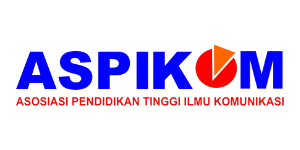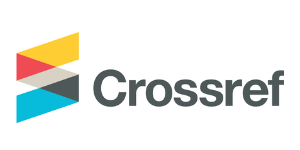Interpersonal Communication Using Personal Sport Device In Forming Community
DOI:
https://doi.org/10.37535/105003120241Keywords:
interpersonal communication, symbolic interaction, sport technology, community developmentAbstract
Technologies matched the effectiveness of various health activity strategies, such as exercise monitoring, information, and social support. The purpose is to find out that technology has become part of delivering sports information that is used by the applications and devices, creating communication between individuals and devices they used to plan and record sports and exercise routines, physical performance, and record all the activity. Effective communication can occur if the sender and the recipient have good skills in exchanging messages. This study may provide an overview of verbal and nonverbal that may occur during communication in sports activities. This manuscript analyze whether technology enhances or hinders Interpersonal Communication using George Herbert Mead's Symbolic Interaction Theory. It uses a technique that includes a literature review and interviews with certain users of personal sports equipment to examine three fundamental concepts: mind, self, and society. According to the study, a person's capacity to interpret symbols is what makes up their mind. Therefore, everyone must interact to develop their mind and get that meaning. Then, the self is the ability to accept and adapt based on the judgment of another person's point of view. Moreover, an individual in the surrounding environment will deliver people in the process of taking tasks in society; they even can form a community as the same user of personal sports devices. Using Symbolic Interaction Theory, humans will perform an action based on the meanings attached to the action. Nevertheless, humans can obtain their purpose from social interaction with others.
References
Adriani, V., Irwandy, D.,; Chrisdina, C. (2019), Human Interaction Based On New Technology In Sport Communication. https://www.researchgate.net/publication/336510188_HUMAN_INTERACTION_BASED_ON_NEW_TECHNOLOGY_IN_SPORT_COMMUNICATION
Aksan, N., Kısac, B., Aydın, M., & Demirbuken, S. (2009, January 1). Symbolic interaction theory. Procedia - Social and Behavioral Sciences; Elsevier BV. https://doi.org/10.1016/j.sbspro.2009.01.160
Balagué, N., Pol, R., & Guerrero, I. (2019). Science or Pseudoscience of Physical Activity and Sport? Apunts. Educación Física y Deportes, 136, 129-136. http://dx.doi.org/10.5672/apunts.2014-0983.es.(2019/2).136.09
Bungin, M. B. (2017).Penelitian Kualitatif (ed. 2).Jakarta: Prenada Media Group.
Delves, R.I.M., Aughey, R.J., Ball, K. et al. The Quantification of Acceleration Events in Elite Team Sport: a Systematic Review. Sports Med - Open 7, 45 (2021). https://doi.org/10.1186/s40798-021-00332-8
Emzir. (2016). Metodologi Penelitian Kualitatif: Analisis Data. Jakarta: Rajagrafindo Persada.
Fulginiti, A., & Bagin, D. (2017). Practical public relations: Theories and techniques that make a difference. Dubuqe, IA: Kendall/Hunt Publishing Company
Foster, C., Rodriguez-Marroyo, J. A., & de Koning, J. J. (2017). Monitoring Training Loads: The Past, the Present, and the Future. International journal of sports physiology and performance, 12(Suppl 2), S22–S28. https://doi.org/10.1123/ijspp.2016-0388
Fulginiti, A., & Bagin, D. (2005). Pratical public relations: Theories and techniques that make a difference. Dubuqe, IA: Kendall/Hunt Publishing Company.
Gamble, T.K., & Gamble, M. (2002). Communication works. (7 ed). New York, NY:McGraw-Hill Companies
Herold M, Kempe M, Bauer P, Meyer T (2021). Attacking key performance indicators in soccer: current practice and perceptions from the elite to youth academy level. J Sports Sci Med, 20(1), 158–169. https://doi.org/10.52082/jssm.2021.158
Herdiansyah, H. (2014). Metodologi Penelitian Kualitatif untuk Ilmu-ilmu Sosial. Jakarta:Salemba Humanika
Hristovski, R., & Balagué, N. (2020). Theory of Cooperative-Competitive Intelligence: Principles, Research Directions, and Applications. Frontiers in psychology, 11, 2220. https://doi.org/10.3389/fpsyg.2020.02220
Insancamila, V. R., Rizqi, M., & Norhabiba, F. (2022). Aktivitas Komunikasi Interpersonal Barista Dalam Menjalin Hubungan Baik dengan Pelanggan. Jurnal Untag Surabaya, 3.
Jadon, G. R., Muthukrishnan, J., & Datta, K. (2024). Sports and exercise medicine: Beyond injury management. Medical Journal Armed Forces India. https://doi.org/10.1016/j.mjafi.2024.03.007
Khan., S.A. et all (2022). Sports Motivation And Use Of Locational Social Media Through Gps Technology. IJPESS. 6. https://doi.org/10.51846/the-sky.v6i0.1561.
L’Etang, J. (2006). Public relations and sport in promotional culture. Public Relations Review, 32(4). https://doi.org/10.1016/j.pubrev.2006.09.006
Nurdin, A. (2020). Teori komunikasi Interpersonal Disertai Contoh Fenomena Praktis. Jakarta: Prenada Media.
Praditha, A., & Widodo, A. (2022). Economy Media Strategy of Kompas TV Facing Digital Era. Journal of Communication and Public Relations, 1(2), 1–12. https://doi.org/10.37535/105001220221
Quintas, G., Reche, X., Sanjuan-Herráez, J. D., Martínez, H., Herrero, M., Valle, X., Masa, M., & Rodas, G. (2020). Urine metabolomic analysis for monitoring internal load in professional football players. Metabolomics : Official journal of the Metabolomic Society, 16(4), 45. https://doi.org/10.1007/s11306-020-01668-0
Rohim, S. (2016). Teori Komunikasi Perspektif, Ragam dan Aplikasi. Jakarta: Rineka Cipta.
Saw AE, Main LC, Gastin PB (2016). Monitoring the athlete training response: subjective self-reported measures trump commonly used objective measures: a systematic review. Br J Sports Med. 50(5), 281–91. https://bjsm.bmj.com/content/50/5/281.
Siregar, N., S., S. (2016). Kajian Tentang Interaksionisme Simbolik. Perspektif, 1(2), 100-110. https://doi.org/10.31289/perspektif.v1i2.86
Sitohang, M. Y., & Ghani, M. W. (2023, July 26). Survei: Pandemi covid-19 Naikkan popularitas Dan Durasi Olahraga di Rumah. https://theconversation.com/survei-pandemi-covid-19-naikkan-popularitas-dan-durasi-olahraga-di-rumah-154187
Sobur, A. (2016). Semiotika Komunikasi. Bandung: PT Remaja Rosdakarya.
Srisathan, W. A., & Naruetharadhol, P. (2022). A COVID-19 disruption: The great acceleration of digitally planned and transformed behaviors in Thailand. Technology in Society, 68. https://doi.org/10.1016/j.techsoc.2022.101912
Suhartadi, I. (2017, December 22). 2018, Prospek Bisnis Pusat Kebugaran Makin Menjanjikan. beritasatu.com. https://www.beritasatu.com/ekonomi/469983/2018-prospek-bisnis-pusat-kebugaran-makin-menjanjikan
Tempelaar D, Rienties B, Nguyen Q. Subjective data, objective data and the role of bias in predictive modeling: lessons from a dispositional learning analytics application. PLoS ONE. 2020. 15(6), 1–29. https://doi.org/10.1371%2Fjournal.pone.0233977
West, S. W., Clubb, J., Torres-Ronda, L., Howells, D., Leng, E., Vescovi, J. D., Carmody, S., Posthumus, M., Dalen-Lorentsen, T., & Windt, J. (2021). More than a Metric: How Training Load is Used in Elite Sport for Athlete Management. International journal of sports medicine, 42(4), 300–306. https://doi.org/10.1055/a-1268-879
















